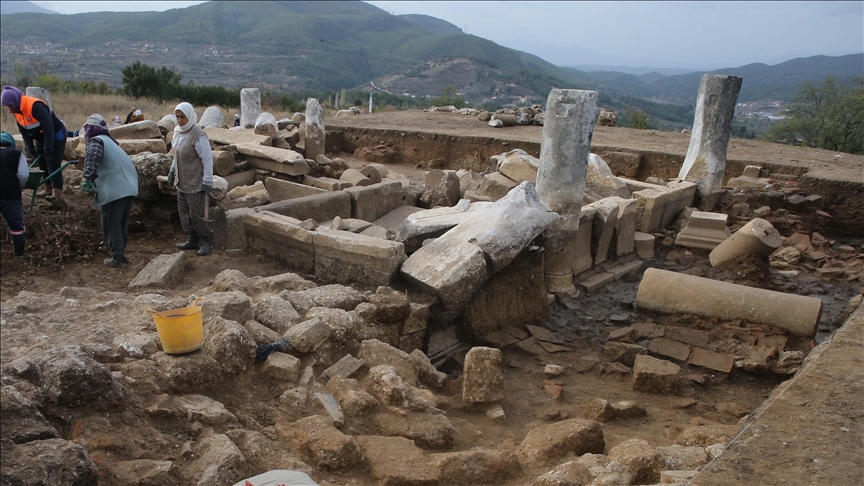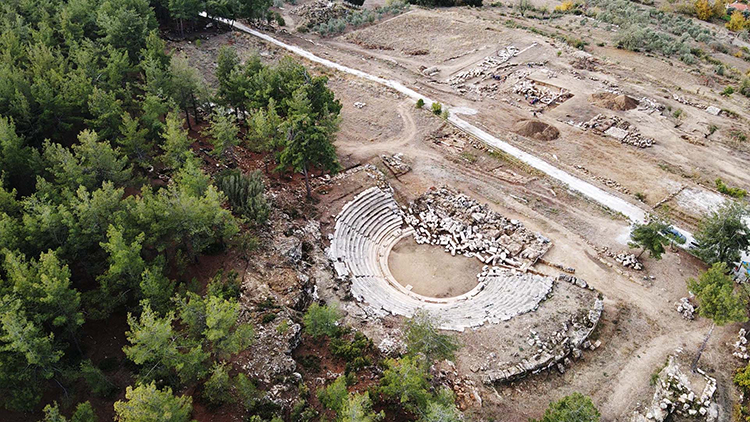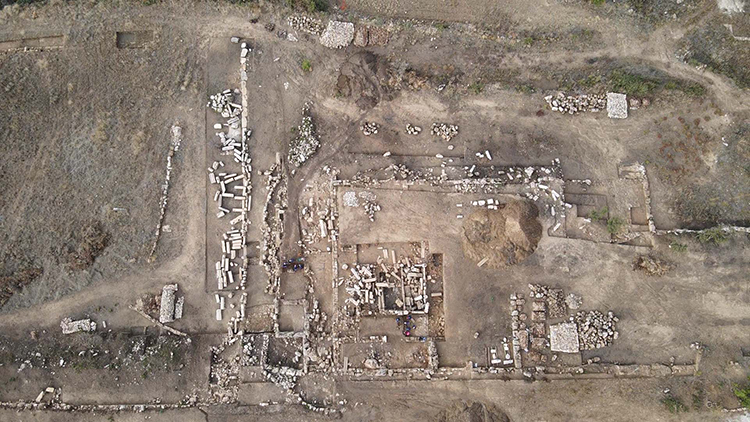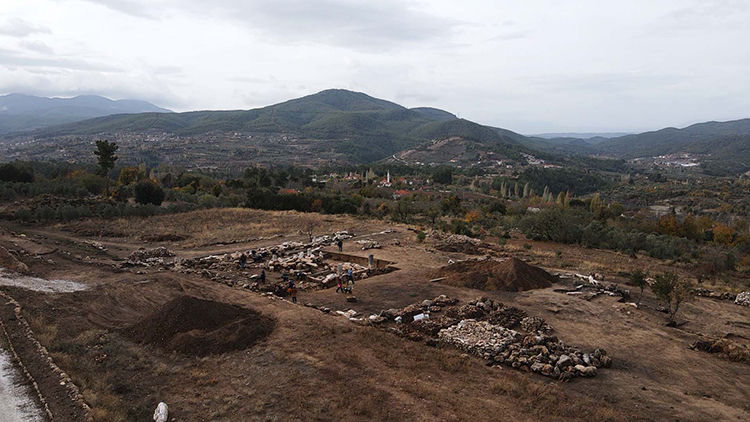
The structure thought to be a temple turned out to be a monumental fountain
Archaeologists have determined that a structure once thought to be a temple in the ancient city of Hyllarima is actually a monumental fountain.
The ancient city of Hyllarima, surrounded by walls about 2 kilometers long, is located in the province of Mugla in southwestern Türkiye.
Hyllarima is one of the cities that minted coins during the Roman period.

The ancient city was an active settlement during the Classical, Hellenistic and Roman periods. Archaeological excavations have uncovered important structures such as theater, assembly building and agora.
Archaeologists working in the city in previous excavation seasons thought that the columns in the area where the agora structure was located indicated that it was a temple. However, Assoc. Prof. Dr. Bekir Özer, the current head of excavations, stated that they determined that this structure was not a temple but a monumental fountain.

Özer stated about the studies that they believe the stone used in the city walls and monumental terrace walls was sourced directly from the area where the settlement is located, while the marble in the monumental structures was brought from quarries to the east of the city.
“We encountered a structure that surprised us all. We have uncovered the first monumental fountain building of Hyllarima, preserved along with all its architectural elements. The location astonished us. This is in the most central and important part of the city. Throughout human history, our unchanging need has been water. In this context, the fact that this fountain was built in the most beautiful spot of the city, with the theater above it and a street beside it, and that there is a monumental entrance from the street to here is very significant for us.”

According to preliminary results from the fountain, it is determined that the structure was built during the Hellenistic Period and was intensively used during the Roman Period, particularly in the 2nd and 4th centuries AD, when the city was at its peak.
Cover Photo: Durmuş Genç/Anadolu Agency
You may also like
- A 1700-year-old statue of Pan unearthed during the excavations at Polyeuktos in İstanbul
- The granary was found in the ancient city of Sebaste, founded by the first Roman emperor Augustus
- Donalar Kale Kapı Rock Tomb or Donalar Rock Tomb
- Theater emerges as works continue in ancient city of Perinthos
- Urartian King Argishti’s bronze shield revealed the name of an unknown country
- The religious center of Lycia, the ancient city of Letoon
- Who were the Luwians?
- A new study brings a fresh perspective on the Anatolian origin of the Indo-European languages
- Perhaps the oldest thermal treatment center in the world, which has been in continuous use for 2000 years -Basilica Therma Roman Bath or King’s Daughter-
- The largest synagogue of the ancient world, located in the ancient city of Sardis, is being restored











Leave a Reply